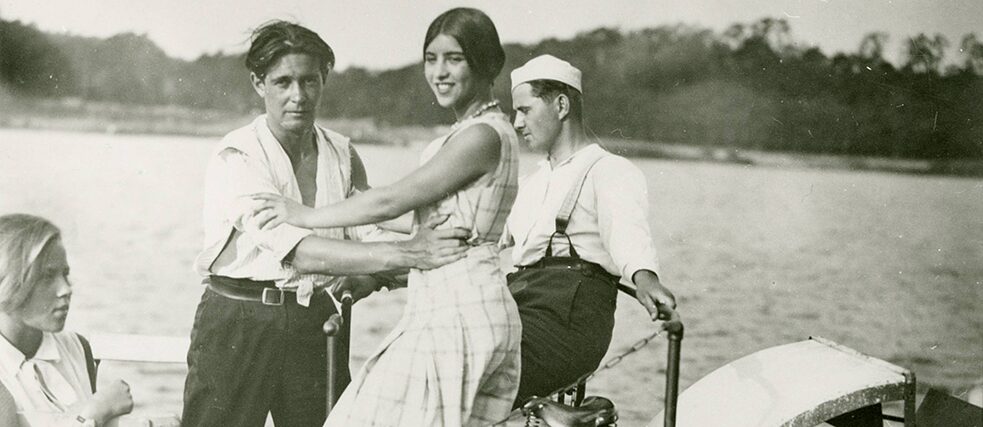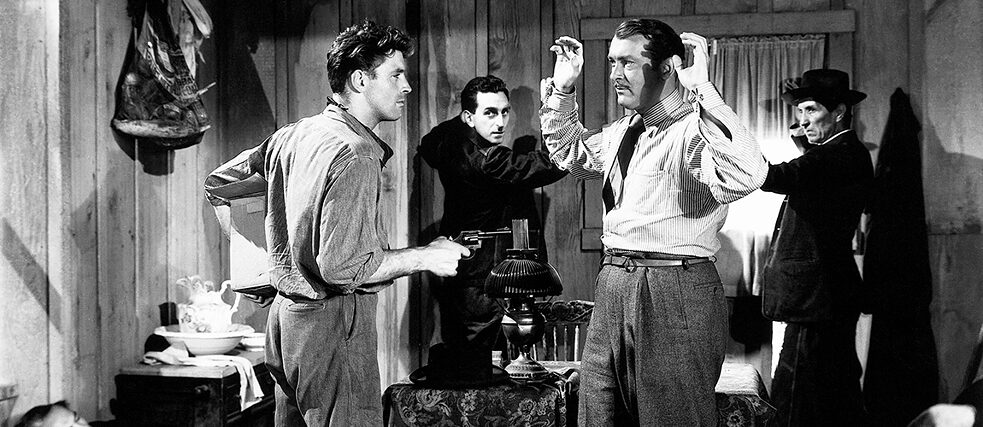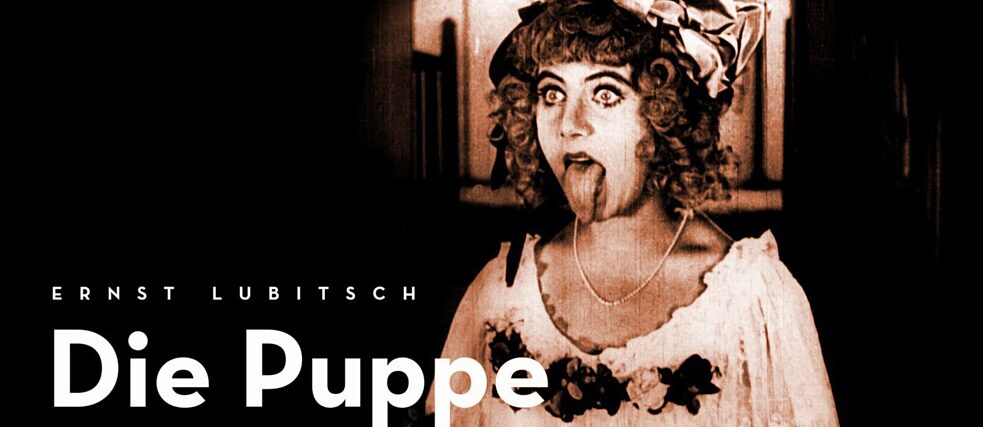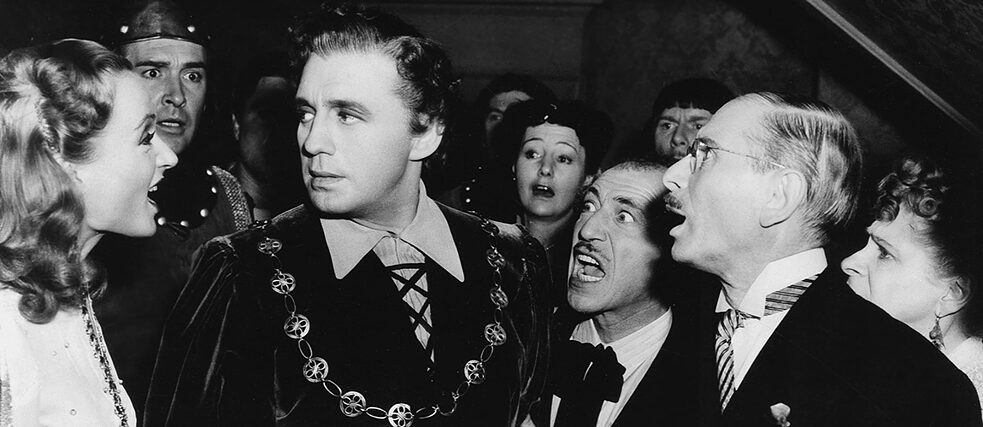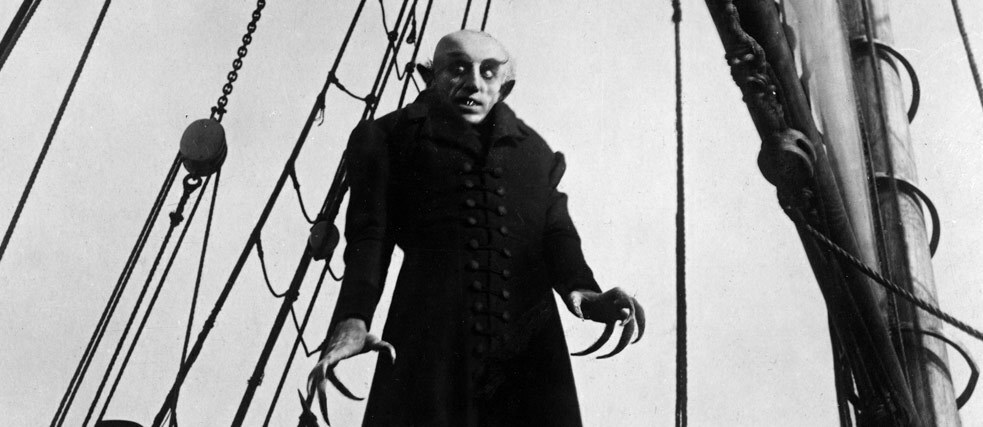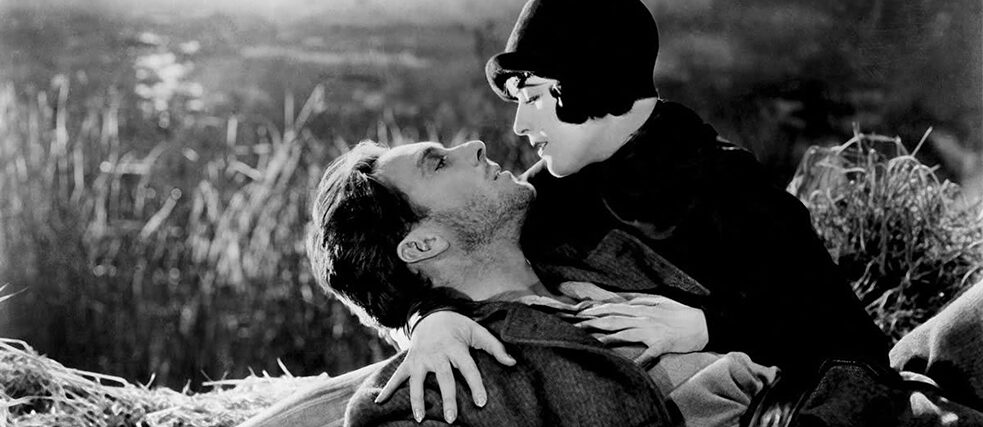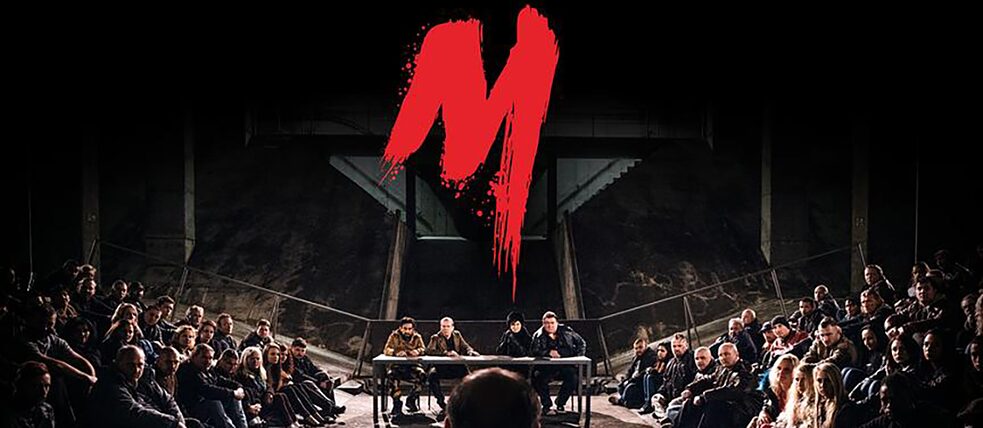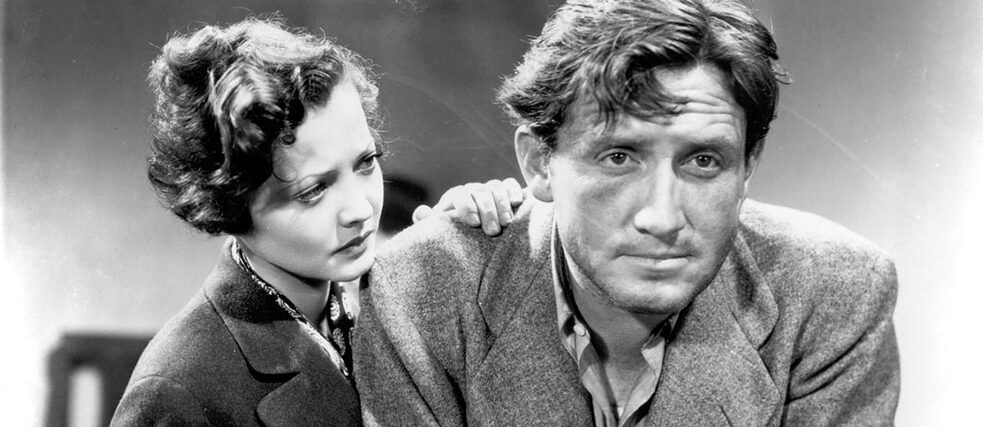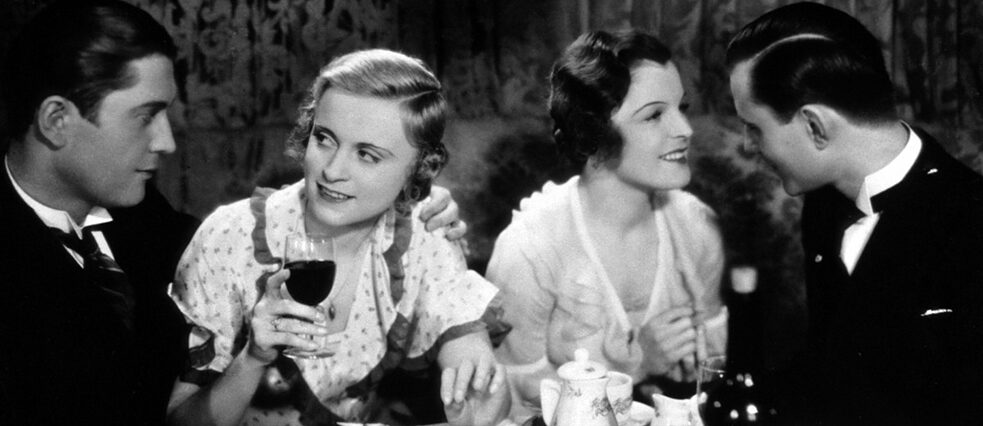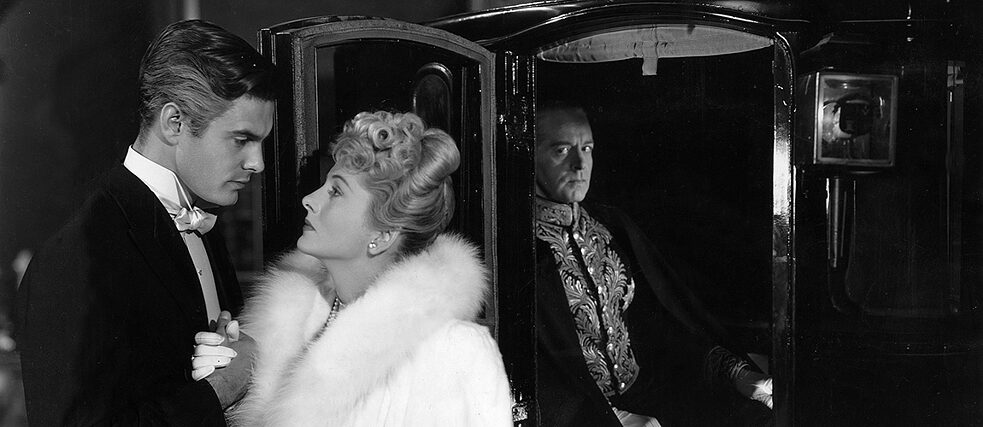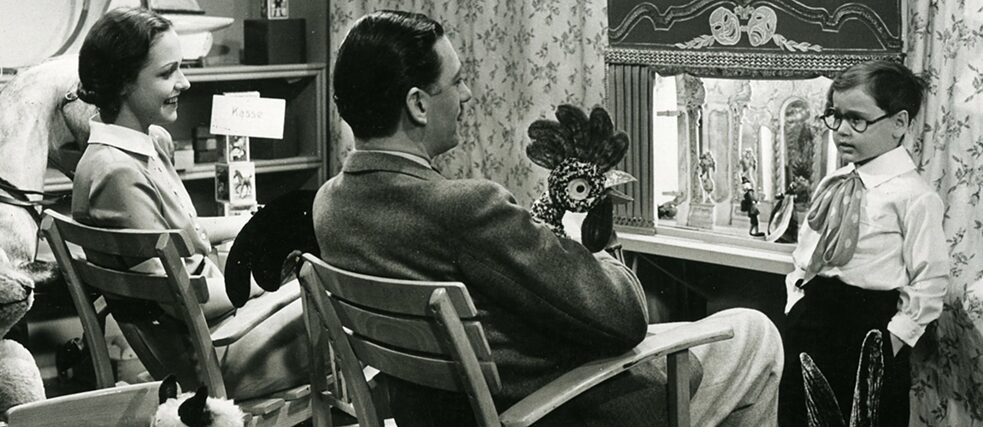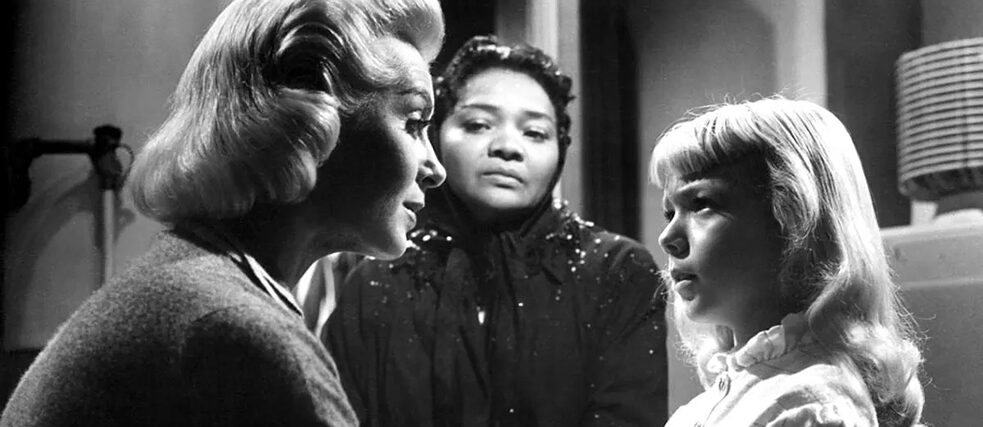WHEN HOLLYWOOD HAD A GERMAN ACCENT – GERMAN DIRECTORS AT THE PACIFIC
Even before the emigration of German intellectuals who had to flee Nazi Germany to Los Angeles, natives of Vienna like Josef von Sternberg and Erich von Stroheim came to the U.S. in their youth, and after a while built artistically impressive careers in Hollywood as film directors. The first two already famed German filmmakers who were invited to work there in the 1920's were Ernst Lubitsch and F.W. Murnau. The enormous success of Lubitsch's inventive historical epics (MADAME DU BARRY, THE LOVES OF PHARAOH) and sophisticated comedies like THE DOLL led superstar Mary Pickford to bring him to L.A. in 1923. ROSITA (1923), the film they made together, satisfied neither of them, but Lubitsch went on to direct several masterpieces in the U.S. (TROUBLE IN PARADISE, NINOTCHKA, THE SHOP AROUND THE CORNER, TO BE OR NOT TO BE), as well to be put in charge of all production at Paramount Pictures.
Murnau's 1922 NOSFERATU was the first time the theme of vampires had been treated in the cinema, and many of the film's images are unforgettable. DER LETZTE MANN (retitled THE LAST LAUGH in English) starred the superstar Emil Jannings in one of his most memorable performances and was a worldwide hit, as was FAUST, Murnau's adaptation of Goethe's play. Invited to Hollywood in 1926, he was given carte blanche to make an "artistic" picture - his SUNRISE not only won three of the top prizes at the first Academy Awards, it is still considered one of the greatest films ever made.
TUESDAY February 7, 7:00 pm, Goethe-Institut Abu Dhabi
Menschen am Sonntag (People on Sunday)
Germany, 1930, 73 min. Directed by Robert Siodmak and Edgar G. Ulmer.
Helmed by a pair of beginning but eventually famous filmmakers who weren’t yet 30, supported by a pair of equally young and unknown talents who were eventual Oscar winners (Billy Wilder and Fred Zinnemann), this remarkable work portrayed a Berlin nobody had seen before. Its cast was comprised of nonprofessionals, portraying people bored by their work and determined to enjoy the freedom of a weekend day devoted to picnics, beer and flirting. It wasn’t until fifteen years later that the “neorealist” movement in Italy turned cameras on “ordinary” people like these, who pretty much remained themselves. These Berliners acted out a simple, beautifully photographed story that anybody could relate to. And they did - this very early example of independent filmmaking was enormously popular and was shown all over Germany.Please register here.
The Killers
U.S.A., 1946, 103 min. Directed by Robert Siodmak. With Burt Lancaster, Ava Gardner, Edmond O’Brien, Albert Dekker, Sam Levene.
Between 1930 and his arrival in the U.S. more than a decade later, Robert Siodmak directed more than a dozen features in Germany and France. The ten films noirs he made at Universal in the mid- 40s are among the strongest examples of the genre, and this adaptation of a short story by Ernest Hemingway is one of the best. Two thugs show up in a small town diner, announcing they want to kill a gas station attendant whom they call “The Swede”. When he learns he’s being targeted, Burt Lancaster (excellent in his first film), doesn’t seem surprised and he doesn’t seem particularly interested in trying to get away. So the heavies kill him, and the film sets out to explores why. Eventually, as the adage “cherchez la femme” insists, the path leads to Kitty Collins (Ava Gardner), the beautiful woman who betrayed the Swede. Typical of the era in which it was made, the film makes her responsible for the death of its protagonist.Please register here.
Meet our curator and host:
A native of midtown Manhattan, Peter Scarlet directed the San Francisco International Film Festival, the first in the U.S., for 19 years, and has also served as Director General of the Cinemathèque Française in Paris, the Tribeca Film Festival in N.Y., the Mar del Plata Film Festival in Argentina, and the Abu Dhabi Film Festival. He has served on film festival juries in more than 25 cities. France's Ministry of Culture awarded him the rank of Officer in its Order of Arts and Letters.WHEN HOLLYWOOD HAD A GERMAN ACCENT – GERMAN DIRECTORS AT THE PACIFIC
Even before the emigration of German intellectuals who had to flee Nazi Germany to Los Angeles, natives of Vienna like Josef von Sternberg and Erich von Stroheim came to the U.S. in their youth, and after a while built artistically impressive careers in Hollywood as film directors. The first two already famed German filmmakers who were invited to work there in the 1920's were Ernst Lubitsch and F.W. Murnau. The enormous success of Lubitsch's inventive historical epics (MADAME DU BARRY, THE LOVES OF PHARAOH) and sophisticated comedies like THE DOLL led superstar Mary Pickford to bring him to L.A. in 1923. ROSITA (1923), the film they made together, satisfied neither of them, but Lubitsch went on to direct several masterpieces in the U.S. (TROUBLE IN PARADISE, NINOTCHKA, THE SHOP AROUND THE CORNER, TO BE OR NOT TO BE), as well to be put in charge of all production at Paramount Pictures.
Murnau's 1922 NOSFERATU was the first time the theme of vampires had been treated in the cinema, and many of the film's images are unforgettable. DER LETZTE MANN (retitled THE LAST LAUGH in English) starred the superstar Emil Jannings in one of his most memorable performances and was a worldwide hit, as was FAUST, Murnau's adaptation of Goethe's play. Invited to Hollywood in 1926, he was given carte blanche to make an "artistic" picture - his SUNRISE not only won three of the top prizes at the first Academy Awards, it is still considered one of the greatest films ever made.
TUESDAY November 8, 7:00 pm, Goethe-Institut Abu Dhabi
The Doll (Die Puppe)
Germany, 1919, 66 mins. Directed by Ernst Lubitsch. With Ossi Oswalda.This delightful, highly stylized comic adaptation of a tale by E.T.A. Hoffman begins with Lubitsch himself setting up props and dolls on a stage, after which a dissolve brings viewers from the models to the real buildings, and the dolls turn into the actors. Offered a fortune by his tyrannical uncle, the wimpy girl-shy Lancelot approaches the dollmaker Hilariius (a duplicate of his own pretty daughter), whom Lancelot can marry, collect the dowry, and then stash the doll in the attic. Everything goes wrong, of course, and the real girl replaces the mechanical one, while being forced to continue to imitate her.
Please register here.
To be or not to be
U.S.A., 1942, 109 mins. Directed by Ernst Lubitsch. With Carole Lombard, Jack Benny, Robert Stack.At the beginning of World War II, the Nazis have occupied Poland, and a troupe of Warsaw actors headed by the extremely self-involved Joseph and Maria Tura (Jack Benny and Carole Lombard) are forced to mount a production of "Hamlet' since the comic play about Hitler they'd planned to stage has had to be scratched. A young lieutenant in the Polish air force (Robert Stack) flees to England, and confides a list of the secret identities of Polish resistance fighters to a trusted colleague. But the colleague is a turncoat, a Nazi collaborator. And Hitler is now in Warsaw!
This amazing film manages to be both a tense thriller and a pee-in-your pants comedy, pairing a celebrated radio comedian whose other film appearances were negligible (Jack Benny), with one of the greatest stars of screwball comedy (Carol Lombard) in her final film appearance before she died in a plane crash at the age of 34.
Please register here.
TUESDAY November 22, 7:00 pm, Goethe-Institut Abu Dhabi
Nosferatu, a symphony of horror (Nosferatu - Eine Symphonie des Grauens)
1922, 95 mins. Directed by F.W. Murnau. With Max Schreck, Gustav von Wangenheim, Greta Schroeder. Original score for the film's initial release: Hans Erdmann.
One of the most celebrated and influential of all silent films depicts the journey of a German real estate salesman, compelled by his employer to leave his wife and travel to the otherworldly land of Transylvania, where he encounters the supernatural figure of Count Orlok. (Adapting Bram Stoker's English novel "Dracula" without authorization, Murnau was obliged to change the names of the characters, so Dracula the vampire, became Orlok.) The Count then comes to visit the property he has acquired, after a voyage on a ship all of whose crew fall victim to the rats who we understand accompany Orlok though we never see them together. When the boat docks in a Baltic town (Bremen?) the resulting arrival of the plague in the stricken town is signaled by the inevitable and apparently unstoppable succession of coffins that appear everywhere. At the end the vampire dissolves - or does he? Screenings of NOSFERATU have evolved in recent years, as some viewers were as horrified as the film's first audiences had been, while others - too sophisticated? too jaded? - found some of the camera effects in the early parts of the film an excuse to giggle. But who in our Abu Dhabi audience will have seen the film since we began to experience a pandemic of our own?Please register here.
Sunrise
U.S.A., 1927, 93 mins. Directed by F.W. Murnau. With Janet Gaynor, George O'Brien. Original Movietone score for the film's initial release by Hugo Reisenfeld.
Released as SUNRISE: A SONG OF TWO HUMANS, Murnau's first American film won no fewer than 3 Oscars - Best Picture, Actress and Cinematography (Charles Rosher and Karl Struss.) The clash between rural and urban values is a common theme in American cinema, perhaps never better depicted than here. The happiness of a peasant couple is threatened by a vamp (yes, that word again), who convinces the rube to murder his wife. His attempt fails, the couple travels to the city, and appears to fall in love all over again. But on their boat-trip home, a tremendous storm erupts.... Murnau's mastery of the moving camera is one of the outstanding elements of this still remarkably touching work.The second part of this series focuses on a quartet of German filmmakers (Max Ophüls, Fritz Lang, Douglas Sirk and Robert Siodmak) who struggled to get to Hollywood after being forced to leave Hitler's Germany. In the interim, they worked elsewhere in Europe, but eventually all made their way to the U.S., and all made memorable films there.
TUESDAY DECEMBER 6, 7:00 pm Goethe-Institut Abu Dhabi
M
Germany, 1931, 110 mins. Directed by Fritz Lang. With Peter Lorre, Ellen Widmann, Gustaf Gründgens
Having had wide success with urban thrillers like DR. MABUSE and the exploration of a city of the future known as METROPOLIS (inspired by his earlier visit to New York), Fritz Lang and his scenarist-wife Thea von Harbou turned to explore the tragic psyche of someone living in a contemporary city, who happens to be a serial killer of children. Starting from the actual case of a criminal who was still at large, they cast Peter Lorre, a stage actor who had never before appeared in a film, and the result was one of cinema’s most unforgettable and chilling protagonists. His crimes so repellent that both the police and the underworld (aiming to evade greater police activity) combine to track him down, Lorre’s Peter Kurten struggles against his fate, like the protagonists of almost all films by this brilliant filmmaker.
Fury
U.S.A., 1936, 92 mins. Directed by Fritz Lang. With Spencer Tracy, Sylvia Sidney. When Goebbels offered him control of the entire film industry of Nazi Germany, Fritz Lang took the first train west. Once in Paris, he made one film there, but he continued on to Hollywood, where after several years of hanging around the studios he succeeded in finding a project. His FURY focuses on a wrongly-accused prisoner who survives an attack by a lynch mob. His vengeful loathing for the collective of ordinary people constitutes one of the strongest political statements in any American film, astonishing even now since it was made at MGM, Hollywood’s glossiest “dream factory”.
TUESDAY January 10, 7:00 pm, Goethe-Institut Abu Dhabi
LiebeleiGermany, 1933, 88 mins, Directed by Max Ophuls. With Magda Schneider, Paul Hörbiger, Luise Ulrich, Gustaf Gründgens.
In pre WWI Vienna, two officers meet a pair of pretty girls (one of them Magda Schneider, mother of Romy Schneider), when they let a pair of opera glasses fall from their box. Based on a story by Artur Schnitzler, perhaps most famous for his play about loveless sexual encounters, REIGEN (also adapted into LA RONDE, another Ophuls film he made in France decades later), LIEBELEI is one of cinema’s most memorable romances. Famous for the skillful grace of his always moving camera, Ophuls here captures an incredibly touching love story.
Letter from an unknown woman
U.S.A., 1948, 87 mins. Directed by Max Ophuls. With Joan Fontaine, Louis Jourdan.
After LIEBELEI, Ophuls was on the run, and directed films in France, Italy and Holland for more than a decade. When he finally made it to Hollywood, his first experience was an unhappy one. But when the Oscar-winning actress Joan Fontaine came upon a novella by Stefan Zweig set in 19th Century Vienna, she approached John Houseman, who had produced Orson Welles’s CITIZEN KANE. The Viennese setting of Zwieg’s tale reminded Houseman he was a big fan of LIEBELEI, and that led to Ophuls’ being hired to direct LETTER FROM AN UNKNOWN WOMAN, with a script by another Welles associate, Howard Koch. Ophuls brought along Franz Planer, the director of photography of LIEBELEI. The story is about a woman recounting her three meetings with a man (Louis Jourdan), whom she first meets as a teenager and with whom she has a one-night stand years later. Time passes, and she writes him a letter to tell her story - but of course, he doesn’t remember her. Ophuls’ tracking shots communicate both the exhilaration and bittersweet tone of this heartbreaking work.
TUESDAY January 24, 7:00 pm, Goethe-Institut Abu Dhabi
The final chord (Schlussakkord)
Germany, 1936, 100 min. Directed by Douglas Sirk. With Willy Birgel, Lil Dagover, Maria Tasnádi Fekete.
The first melodrama, a tremendous hit in Germany by a brilliant filmmaker who became a master of the genre, m tells the story of an impoverished young woman is forced to give up her child for adoption and accompany her worthless husband to N.Y. When he shoots himself, she must return to Germany, where she gets a job taking care of the adopted son of Garvenberg, a rich and famous symphony conductor (Birgel), whose wife (Lil Dagover) is having a secret affair with an astrology peddling con man. The conductor’s son turns out to be her own son, and the performance of Beethoven’s Ninth she had heard broadcast on the radio in NY turns out to have been conducted by Garvenberg. The confluence of music, coincidence and drama make for gripping viewing.
Despite having a Jewish wife, Sirk managed to continue to work in the "Third Reich" longer than any of his compatriots in the cinema. In 1939, he went to Holland to shoot a feature, and continued to California, but was unable to begin his long American career there until 1943.
Imitation of life
U.S.A. - 1959, 125 min. Directed by Douglas Sirk. With Lana Turner, John Gavin, Susan Kohner, Sandra Dee, Juanita Moore.
Lora Meredith (Turner) is a destitute actress with a 6-year-old daughter, Susie. To look after her child, she hires Annie Johnson, a down-and-out Black woman (Moore). Annie has a daughter of her own named Sarah Jane who is slightly older than Susie. Years pass and Lora becomes the toast of Broadway while Annie tries to cope with her light-skinned daughter (Susan Kohner, in a remarkable performance) who yearns to pass as White. Lora, oblivious to the privilege her race affords her, tries to pass as happy. A classic tearjerker, this remarkable film has also been described as the most critical movie to date about race in America. Despite its being Universal Studios' biggest hit until JAWS, Sirk retired after completing IMITATION OF LIFE and returned to Germany. He lived another eighteen years and saw the reputation of his subversive melodramas inspire a new generation of filmmakers in both Germany, especially Rainer Werner Fassbinder (ALI: FEAR EATS THE SOUL) and the U.S. (Todd Haynes, FAR FROM HEAVEN).


